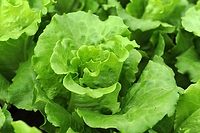FDA Announces Results of Romaine Lettuce Sampling Assignment

The U.S. Food and Drug Administration (FDA) has released the findings of a sampling assignment that tested romaine lettuce from facilities and farms in the Salinas, California, and Yuma, Arizona regions for the presence of pathogens that have been linked to outbreaks of foodborne illness, specifically Shiga toxin-producing Escherichia coli and Salmonella spp.
The assignment to detect these pathogens began in November 2019 and ended in December 2020, including a pause in sample collection and testing from March through October 2020 due to the pandemic. FDA did not detect any pathogens during the assignment.
Samples that were prioritized were from farms and FDA-registered facilities identified in traceback investigations as suppliers of romaine lettuce possibly linked or linked to outbreaks of foodborne illnesses from 2017 to 2019. FDA collected and tested 279 samples for both pathogens. Each sample included 10 subsamples, with each subsample including one or more heads or hearts of romaine lettuce and weighing at least 300 grams. The approach of collecting multiple subsamples increases the probability of detecting pathogens if present, given that microbial hazards may not be uniformly present. FDA field staff collected all samples in their natural form except for the outer leaves having been removed. No fresh-cut lettuce was collected.
Looking for a reprint of this article?
From high-res PDFs to custom plaques, order your copy today!









